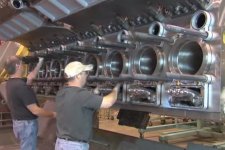Its called the Dunning-Kruger effect. What Dunning and Kruger described is that the least knowledgeable have the strongest opinions, because they lack the basic understanding to realise there might be more to the subject than they can comprehend.
in the 70's Diesel engines in passenger cars were a big mistake, and a V6 engine was too small to run some mileage in a full sized car. Well that was what the general public thought. Reason was the Oldsmobile 88 diesel engine, getting only 120hp out of 5.7 liter of engine displacement, was using a gasoline engine bottom end, not able to take the twice as big compression load of a Diesel (the equally strong Mercedes OM 352 engine had about the same displacement, was also built on the tooling of the Opel Blitz gas engine of WW2, and also non-turbocharged.
The OM 352 however, was a very reliable engine, used in commercial vehicles, not in a passenger car.
The V6 engine not big enough for a passenger car, was an idea that occured when the oil crisis led manufacturers to put their entry level cheap compact V6 engines, into full size cars. It wasnt the lack of displacement that made these engines not last, but it was because these engines were designed as a cheap entry level engine, with a lower design life.
Ecoboost is the same thing: Its all about design life. The technology is there to design and build an engine that will last the same as the 5 liter V8. But turbocharging the old Cologne 4 liter V6 of the 60s (which was a bored out version of the 2.3 liter V6 in the German built Taunus) would lead to premature engine failure.
